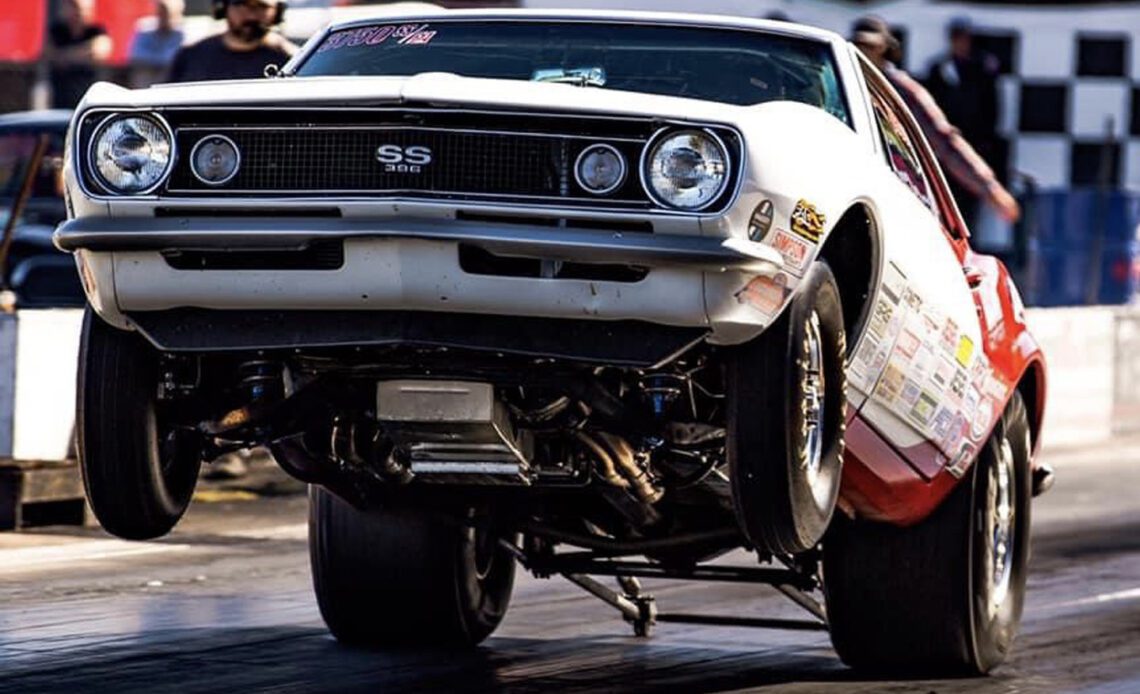Creating proper launch characteristics from the starting line is two-fold. Of course, you want as much weight transfer as possible to plant the rear tires, but you must also control the “return to earth” properly.
AFCO Racing Products developed its new “BNC2” shock absorber valving that continues the shocks’ tradition of smooth landings with an even more aggressive valve package. Bounce control valving improves control issues concerning drag racing’s high population of nose-heavy, wheelstanding door cars competing at the dragstrip.
A prime example of the BNC2 shock’s effectiveness is from testing AFCO performed with NHRA Super Stock racer Brian Haag, who is a former U.S. Nationals Super Stock champ with his iron head, big-block Chevy-powered 1968 Camaro.
When the tires from a wheelstand touch down, the energy of that landing transfers immediately to the shocks. The shocks must control that mass without the landing force blowing through the shock; if the shocks cannot evenly and accurately control that force, the suspension bottoms out, and the coil spring releases the compressed energy back upward. This reaction causes many different problems. In many cases, this rebounding can happen multiple times before the front suspension actually settles.
“You have got to control the wheelstand when it lands, says Eric Saffell, National Account Manager at AFCO. “If you have a car that cycles or ‘bounces’ up and down several times upon landing, you’re making the steering camber and toe-in to aggressively cycle and cause the tires to scrub that track surface. This scrubbing effect can easily cost racers up to .04- to .05-second of elapsed time before the 330-foot mark.”
The new BNC2 valving can be added to existing AFCO shocks or installed in newly-ordered front shock models from their Dominator 4-way adjustable drag shocks, coil-over Reactor shock, stock mount monotube front 70 Series shock, and front coil-over conversion kits.
These hard rebounds, combined with tire scrubbing, can increase the difficulty of dialing in an index or handicap race car, plus it can damage the front suspension ball joints and steering rod ends. Many racers can also attest to crushed headers, damaged oil pans, and more from uncontrolled post-wheelstand “slamming” of the front end.
Saffell adds, “It doesn’t get any more specific than that. A heavy front-end car with a lot of torque needs to get that weight transferred to the rear tires at launch by…
Click Here to Read the Full Original Article at DragzineDragzine…

